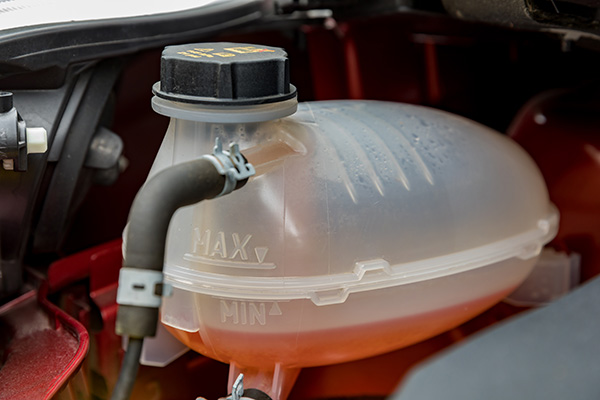
An overheating engine can be one of the most stressful problems to face while driving. You see the temperature gauge rising or steam billowing from under the hood, and your first question is, “How serious is this?” One common fix that shops recommend is a coolant flush. But can a coolant flush really solve an overheating problem, or is it just one piece of the puzzle?
Let’s look at what a coolant flush does, how it helps, and when it’s the right fix for an overheating engine.
Understanding How Engine Cooling Works
Your vehicle’s cooling system is designed to regulate engine temperature, keeping it within a safe operating range. It circulates coolant (a mix of antifreeze and water) through the engine, where it absorbs heat, and then through the radiator, where that heat is released into the air.
This process relies on multiple parts working together—hoses, a water pump, a thermostat, a radiator, and the coolant itself. When any of these components fail or become restricted, your engine may overheat.
What Is a Coolant Flush
Over time, coolant breaks down and becomes less effective. It can accumulate rust, scale, and sludge, which clog narrow passages and reduce the system’s ability to carry heat away from the engine.
A coolant flush replaces all of the old coolant with fresh fluid and also removes buildup that may be circulating through the system. It’s more thorough than simply draining the radiator. A flush clears deposits from the heater core, water jackets, and radiator to restore full flow.
In many cases, this alone can bring coolant temperatures back under control, especially if overheating was caused by restricted flow or degraded fluid.
When a Coolant Flush Can Solve Overheating
A coolant flush is a smart first step when overheating is caused by:
- Old, dirty coolant
- Rust or sediment buildup
- Improper coolant mix (too much water, not enough antifreeze)
- Partial blockages in the radiator or heater core
After a flush, the system is better able to absorb and transfer heat, which often results in immediate temperature improvement. If your engine hasn’t had a coolant flush in years, this service can also prevent future overheating by restoring the system to peak efficiency.
When a Coolant Flush Isn’t Enough
While flushing helps in many cases, overheating can also result from failing components. If your thermostat is stuck closed, the radiator is leaking, or the water pump isn’t circulating fluid properly, flushing alone won’t fix the issue.
Cracked head gaskets or engine block damage can also lead to overheating, and those are more serious repairs. That’s why it’s important to have a proper diagnosis before assuming a flush will solve everything.
If you continue to experience high temperatures after a coolant flush, deeper inspection is necessary to find the root cause.
How Often Should You Get a Coolant Flush
Most vehicles benefit from a coolant flush every 30,000 to 60,000 miles, although this interval may vary depending on the type of coolant used and the vehicle's driving frequency. If you notice signs like engine overheating, coolant discoloration, or a sweet smell inside the cabin, it may be time to have your system checked, regardless of mileage.
Routine coolant service keeps your engine healthier and helps avoid major repairs later on. It also prevents corrosion in your radiator and heater core, which are expensive parts to replace.
Don’t Ignore the Early Signs
Overheating doesn’t always start with steam from the hood. You might notice a rising temperature gauge, poor heater performance in winter, or gurgling sounds after shutting off the engine. These are early signs that your coolant is no longer doing its job.
Addressing the problem sooner with a flush or inspection can save you from roadside breakdowns or serious engine damage down the line.
Overheating? Visit Village Transmission & Auto Clinic in Edmonds, WA
If your vehicle is running hot or showing signs of coolant trouble, Village Transmission & Auto Clinic in Edmonds, WA can help. Our team will evaluate your cooling system, perform a professional flush if necessary, and identify any underlying issues before they worsen. Let us restore your engine’s temperature control and keep your vehicle safe and dependable.